February 21, 2019
Gorgeous Garden Style in Drought
Not that long ago, we could turn on the whirlybird sprinkler or irrigation system whenever we liked. Those days are over. Our bee-loved plants are not!
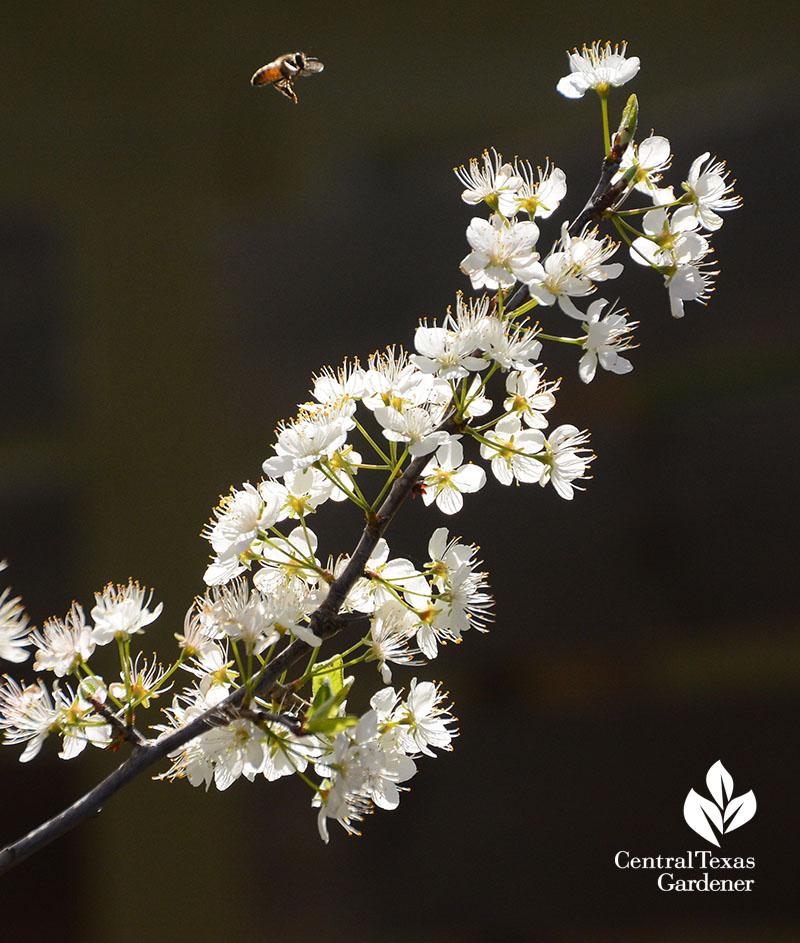
Even native trees do struggle in extended drought. My Mexican plum usually drops all its fruits before fall ripening for lack of deep watering in summer, but it never fails to produce frothy flowers in February and leaves (and fruits) soon after.
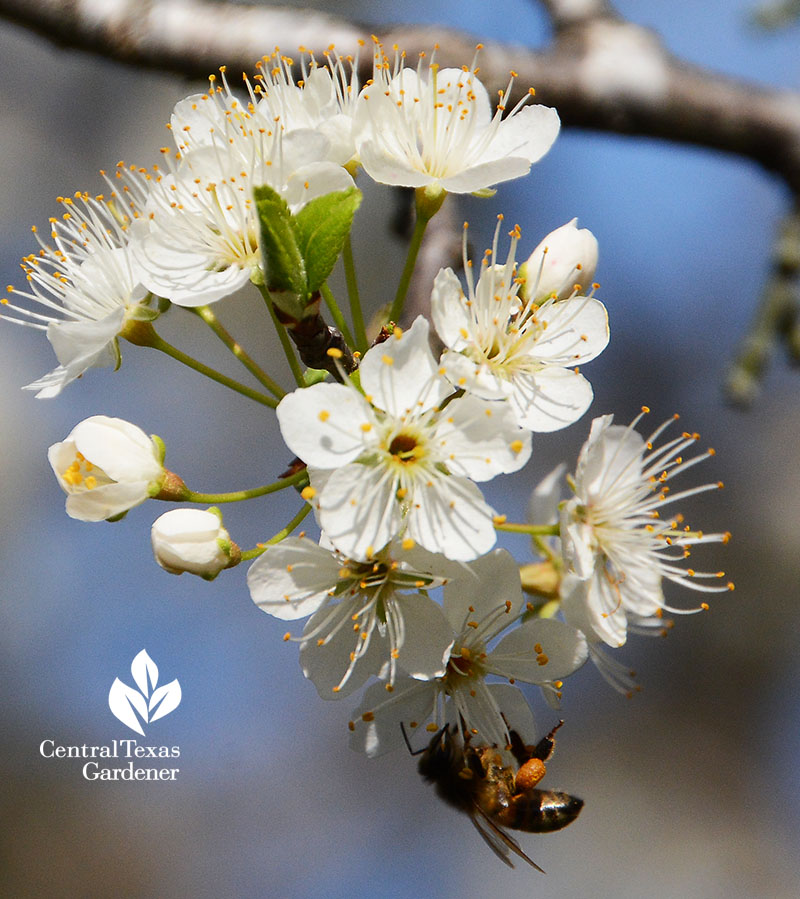
I’ve never had a lot of time (or money) to water a lot, so I avoid water hogs. I save my “water pennies” to hydrate new plants until established. It took me a few years to latch onto the right plants for each spot to handle drought and abnormally drenching rainfalls.
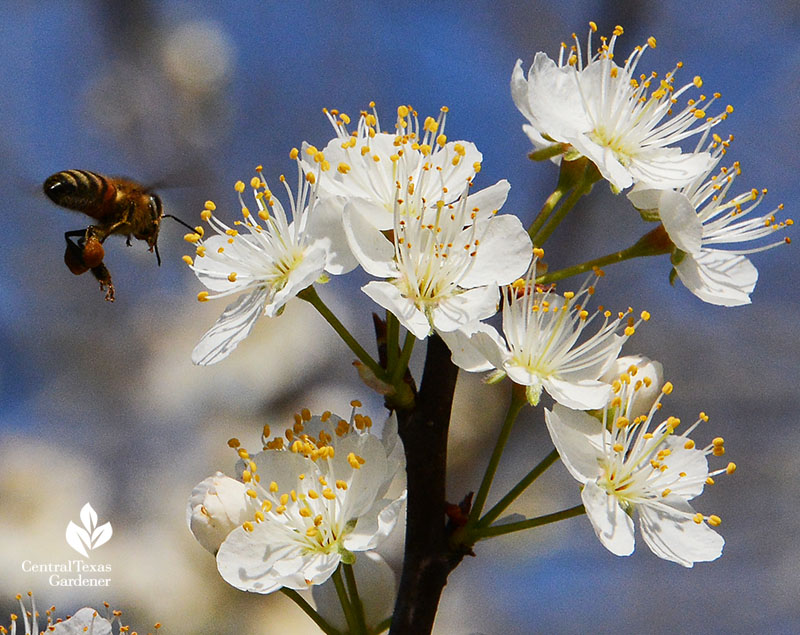
One hit is winter-blooming native golden groundsel (Packera obovata)—an early bloomer for pollinators—that you can snag at the Lady Bird Johnson Wildflower Center plant sale on April 12 (members) and April 13.
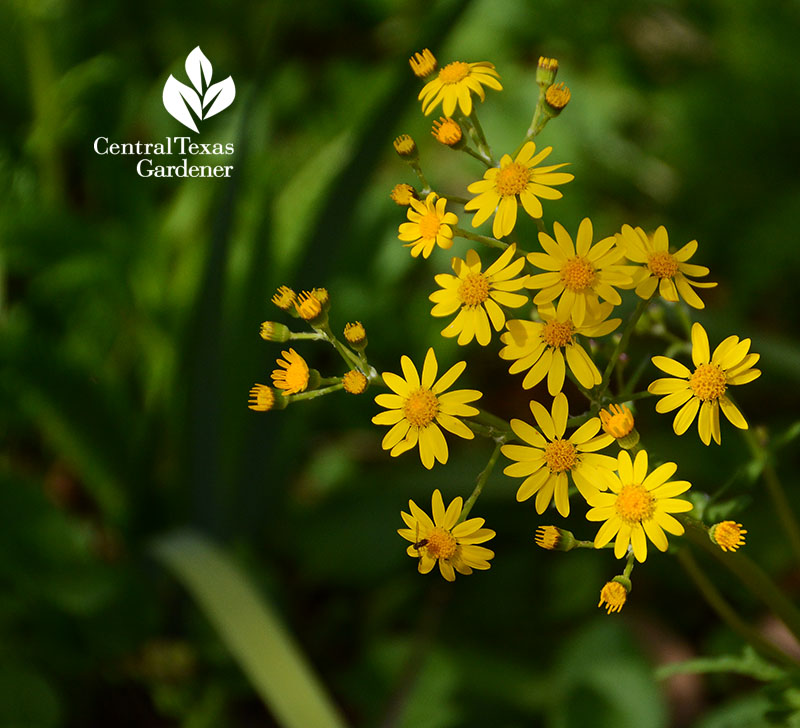
Irises love dry feet, and they’ve got it in my garden! Each one of mine comes with a story, including early blooming Grandma’s Flag white bearded iris from Julie Clark, owner of all-women Stronger Than Dirt organic garden and landscape care.
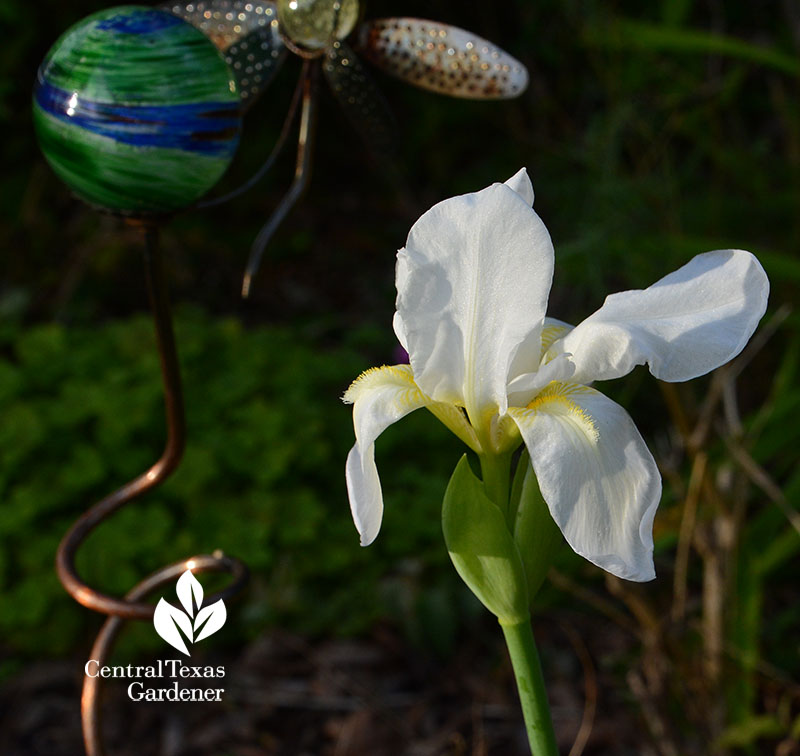
Check out her CTG segments about winter pruning. Pro tips here AND here.
I’ve got several Iris ‘Nada’ pass-alongs, but this year the blue bloomed for the first time. These are truly drought tough evergreens for part shade; long sessions with hot sun will scald the leaves.
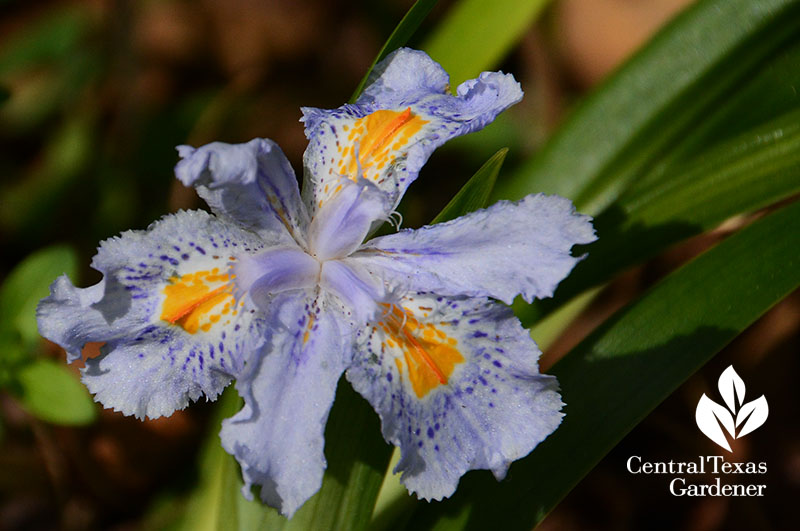
San Antonio’s been a leader in water conservation, since drought severely impacts their supply from the Edwards Aquifer. Along with education for indoor WaterSavers, they head outside with GardenStyle plant and design ideas.

This week, maximize garden beauty without draining water resources. Karen Guz, Director of Conservation for the San Antonio Water System, understands our challenges and that we all have different garden visions.

Watch now for garden style, your way ideas!
Now, what about those exposed tree roots like on Lynn Holliday’s live oak trees? This is quite common with many species. Absolutely, do not cut the roots or cover them too deeply. Daphne explains what to do.
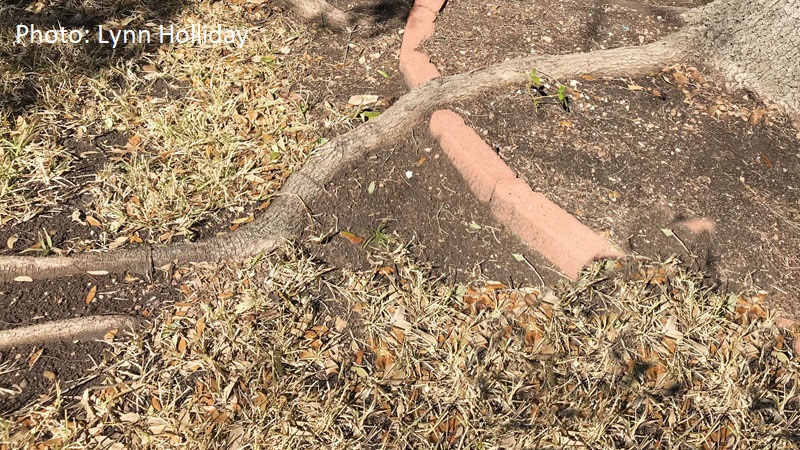
Houseplants don’t need much water, and in fact, will do much better on a dry diet. When they’re overcrowded, though, they can’t absorb water or fertilizer as well, like on this ZZ plant.
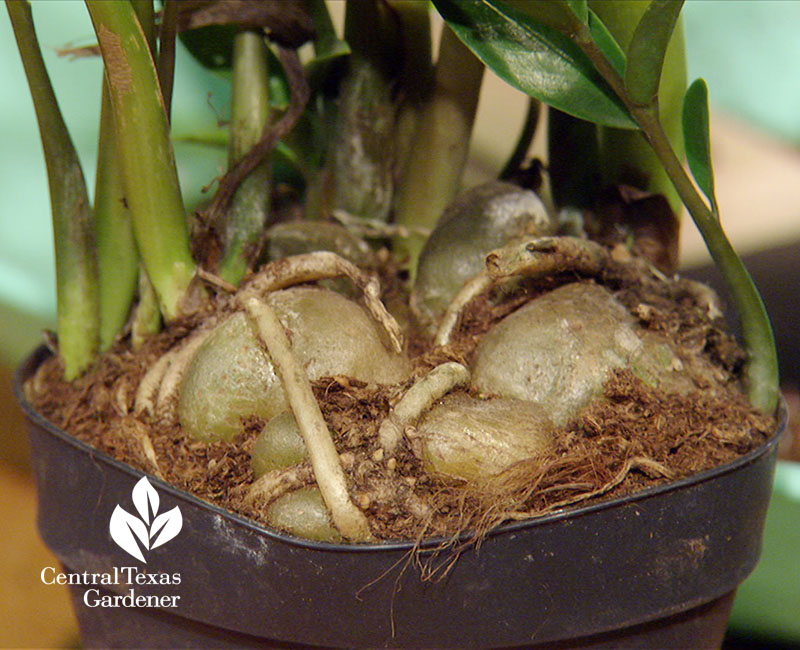
John shows how to divide the wealth to pass along to other containers or grateful friends.
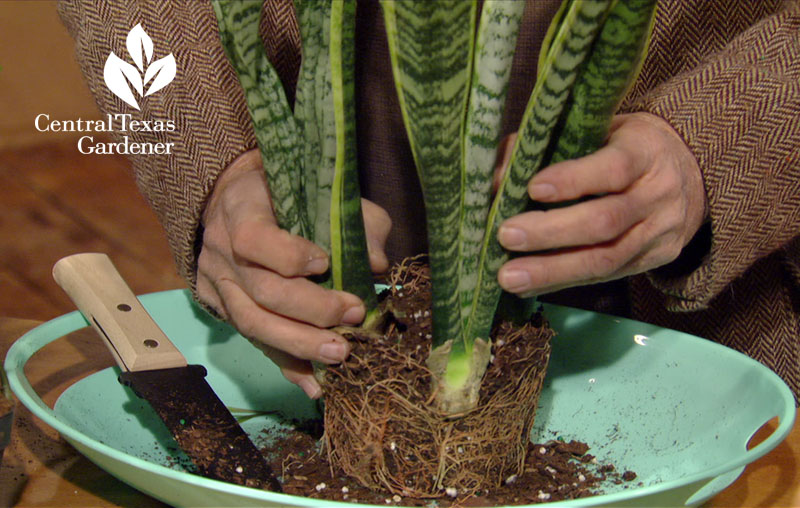
On tour in San Antonio, it was 34° when we visited Shirley and Neal Fox last November. But their kitchen—that they renovated themselves—was a cozy treat!

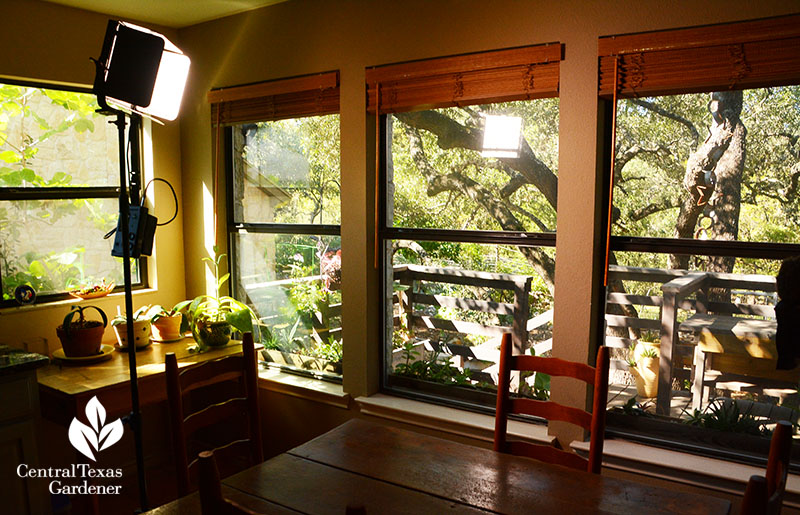
They’d actually bought the house in 1995 when Neal was stationed at former Brooks Air Force Base,but were there only two years before Neal was transferred.
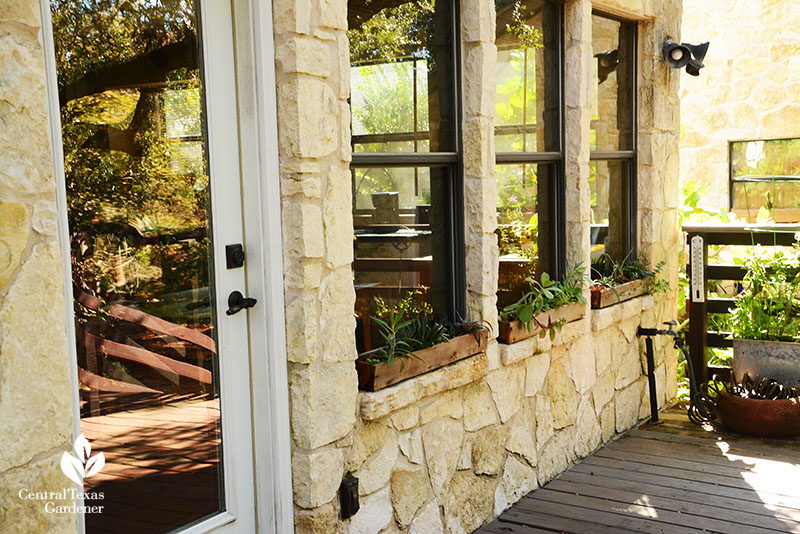
Long before drought response was on everyone’s radar, they learned water conservation techniques when Neal’s service as an Air Force officer stationed them around the country.

So, in 2008 when they returned to San Antonio, weekly watering restrictions were no big deal. Their challenges? Drainage, caliche, and deer.
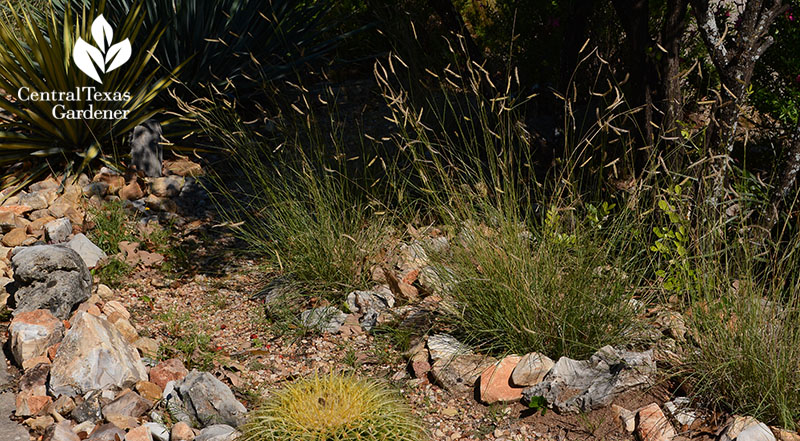
Actually, the yard was pretty stark before they got ahold of it. Neal used a rock bar to break through the rocky soil for Shirley’s dimensional (usually deer-resistant) layers.
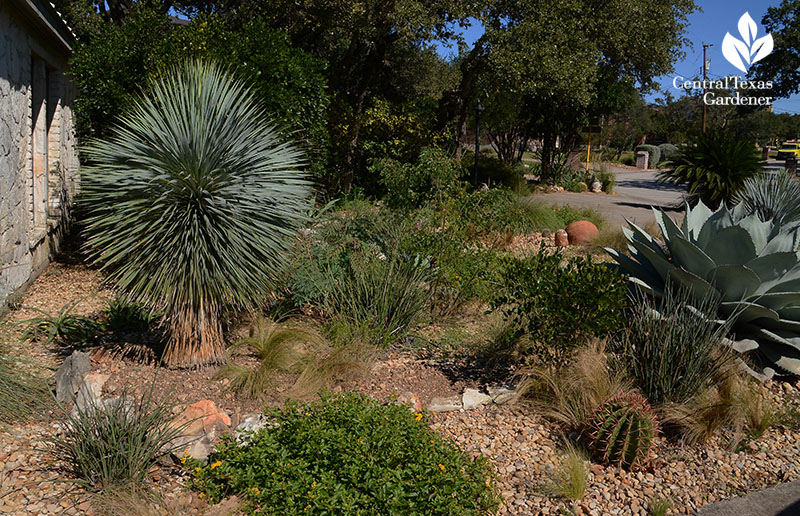
They built up berms and check dams for rainwater control and good drainage, since rain bombs (especially in winter) can rot drought lovers. Edging material was no problem: they had plenty of rocks they’d pried up!
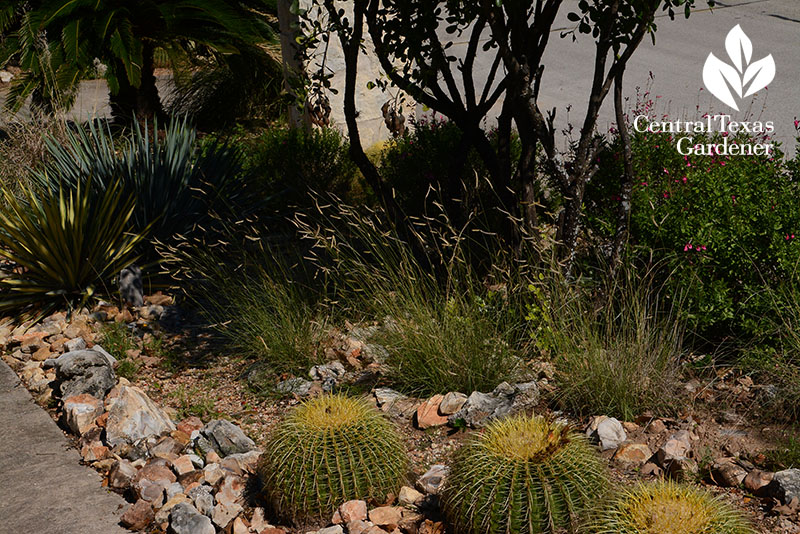
Formerly a professional interior designer, Shirley took her sense of style outdoors, strengthening her arrangements by playing spiky and soft textures against each other.
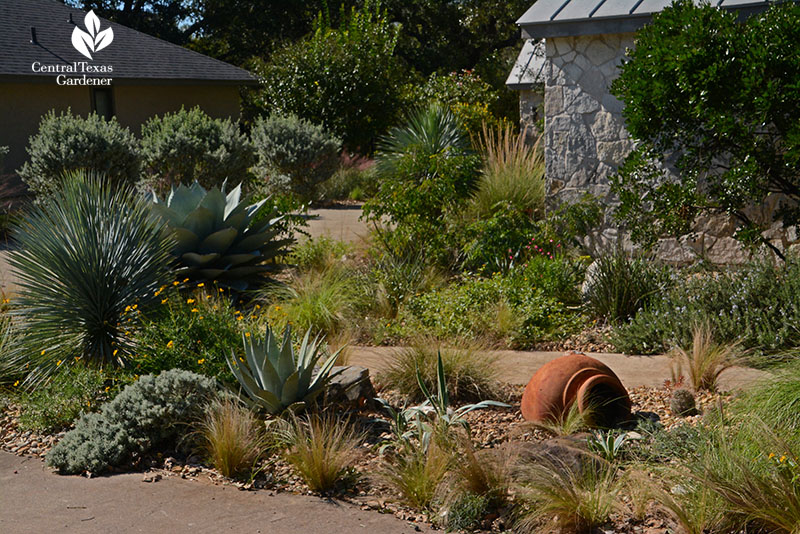
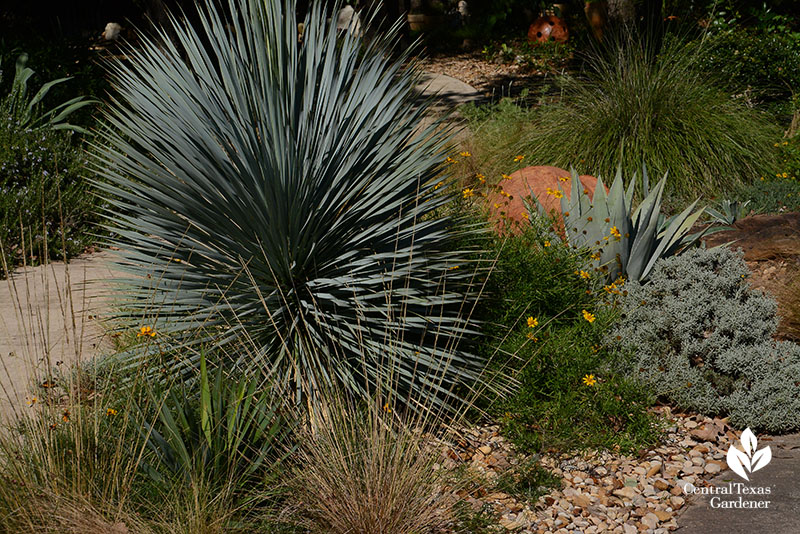
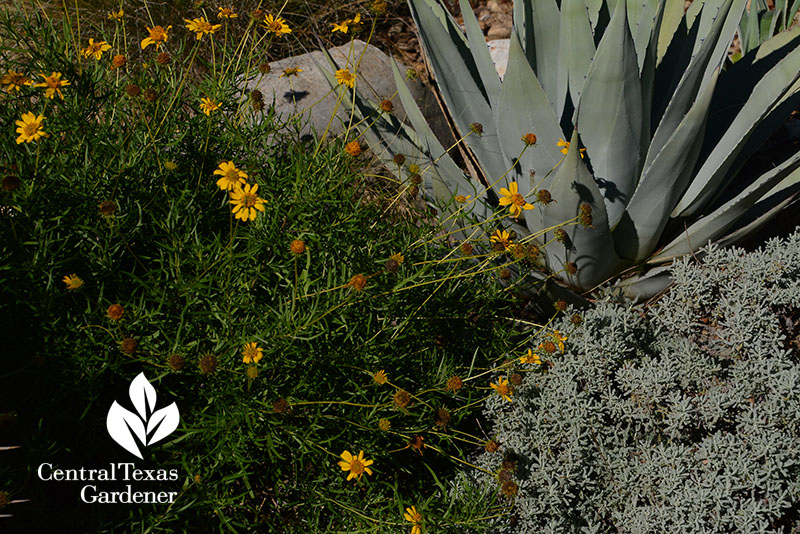
A challenge many of us share is the harsh contrast between sunny and shady areas within one viewpoint.
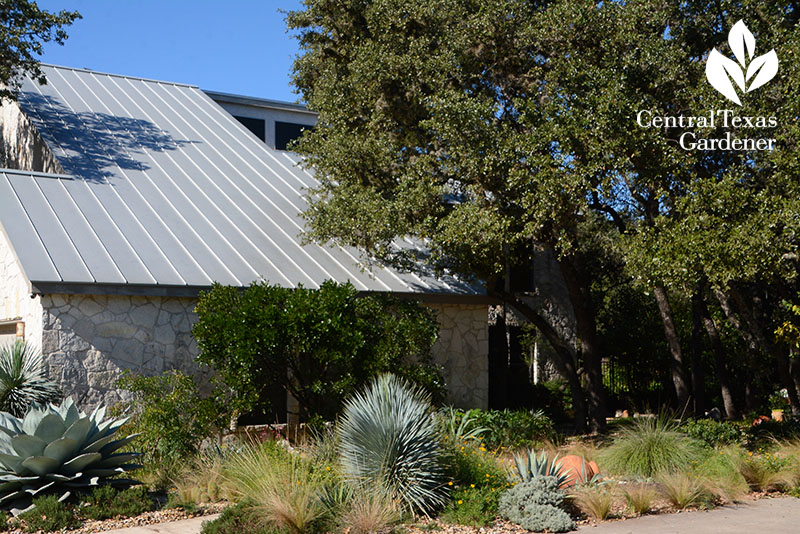
Under the live oaks near the front door, Shirley fashioned soothing, sun-dappled destinations.
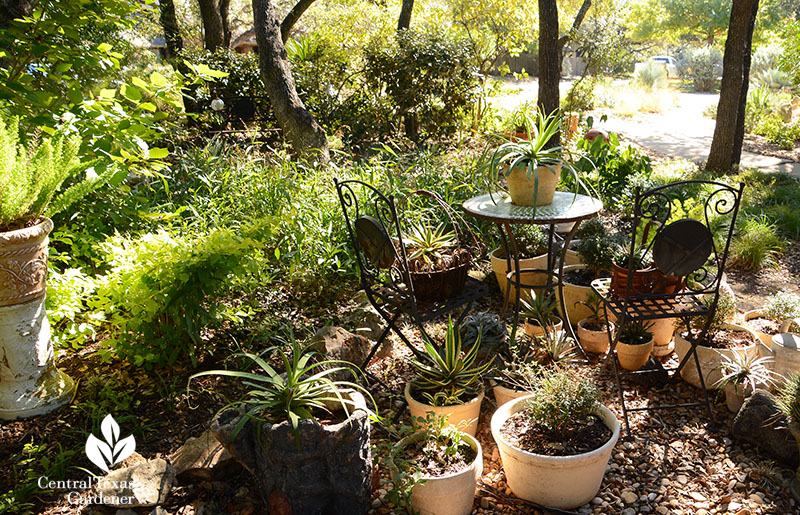
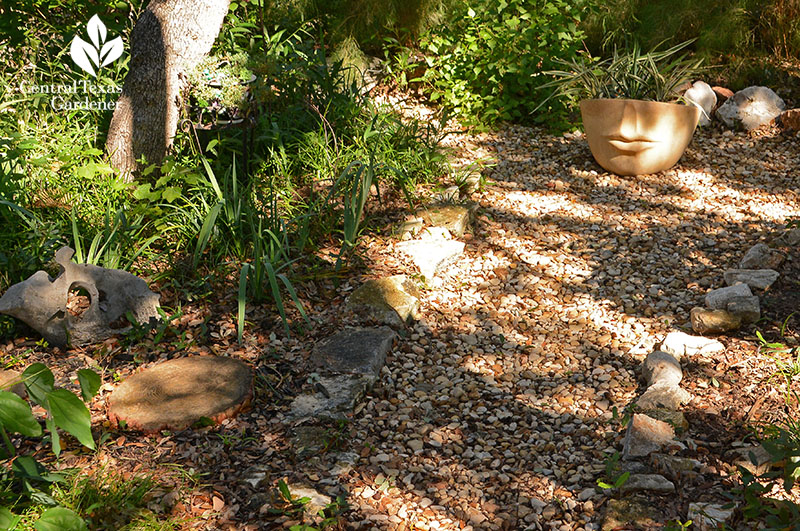
She and Neal employed dry creek beds to funnel rainwater from the sloping street to the backyard and greenbelt beyond.
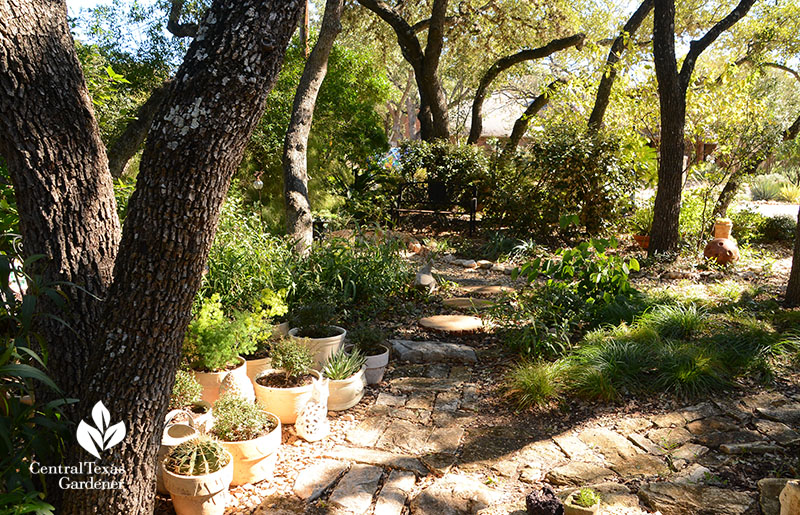
They’re big on rainwater collection for plants and wildlife that need a drink. A naturally sculptural stone they’d unearthed now spouts a recirculating fountain wildlife welcome.
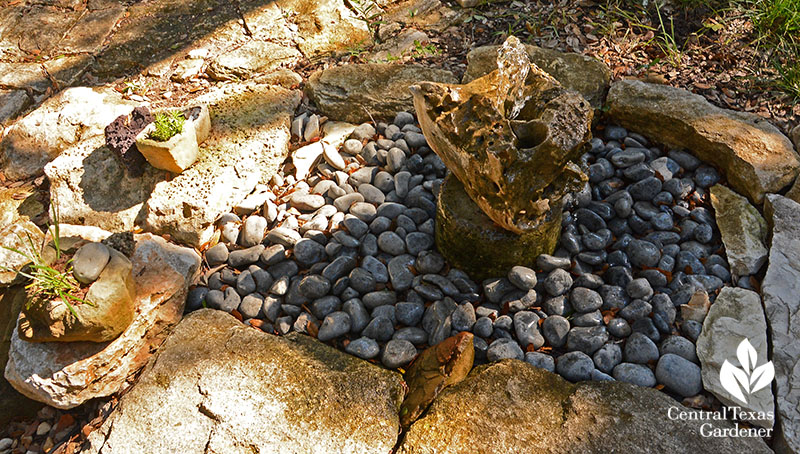
It’s hard to imagine Shirley and Neal ever sitting down, but just in case they do, Shirley designs destinations, like their gorgeous “tree house” deck that overlooks a deer-filled greenbelt.
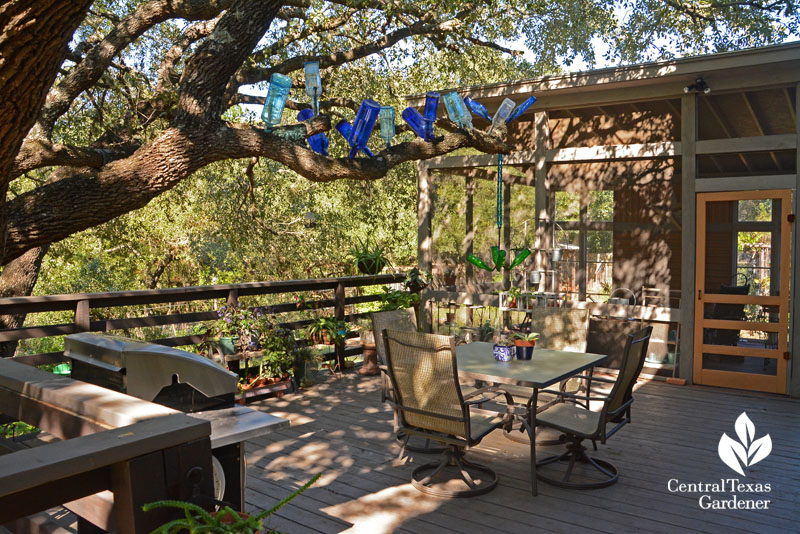
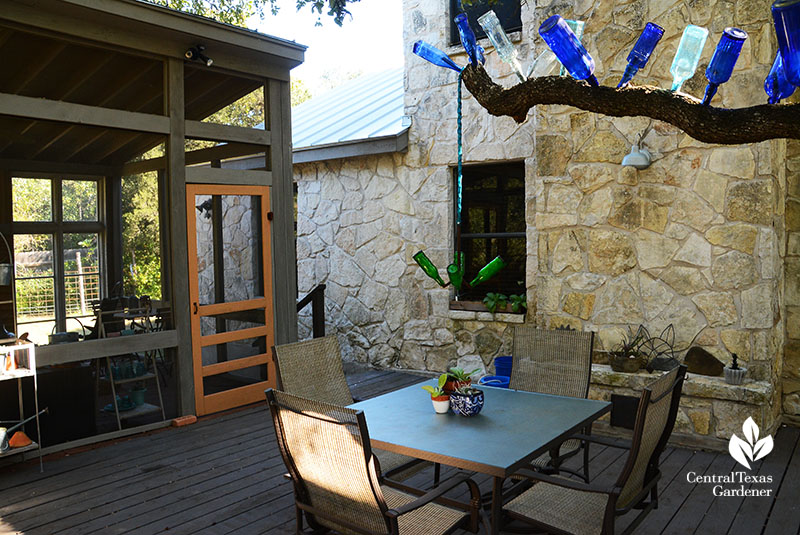
To blend their architecture into the trees, they stained the former cedar red color.
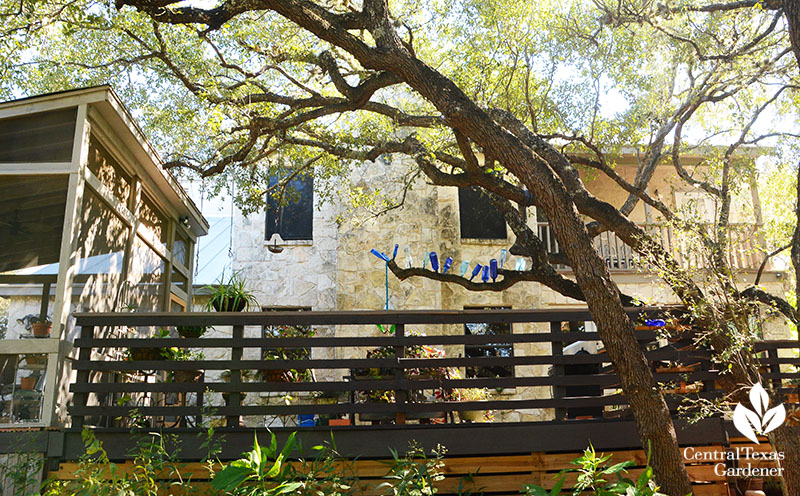
Usually, Shirley’s boldly-colored container plants dot the stands, but she and Neal had quickly hauled them to safety when the cold front blew in.
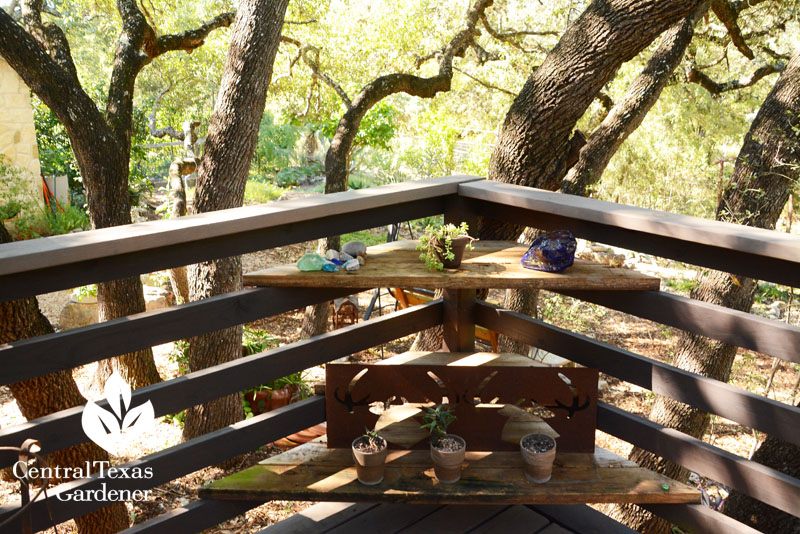
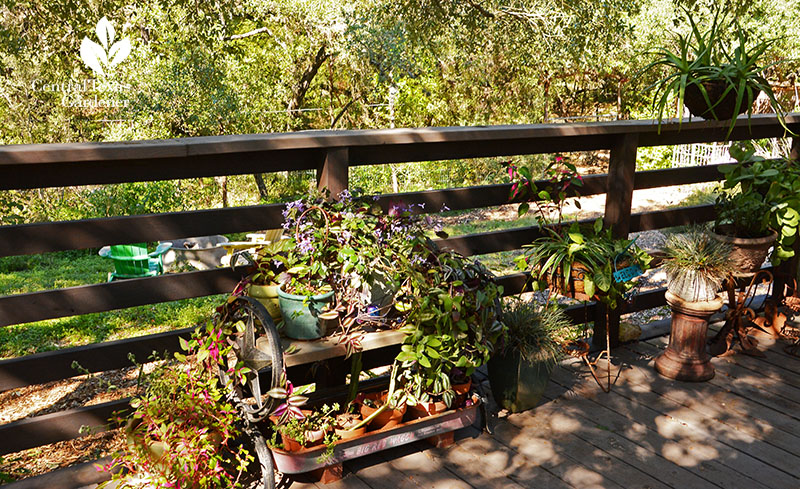
For a break from summertime’s monstrous mosquitoes, they built a cute screened room. I tell ya: these two can do anything!
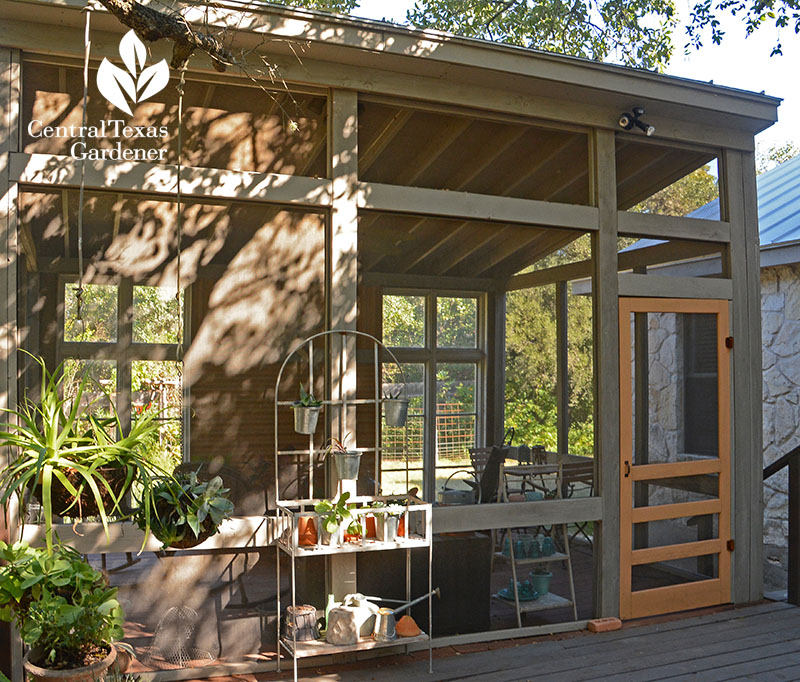
The porch also screens them from a tall hotel nearby. Big on recycling, they snagged the old-fashioned screen door for $2 at a garage sale.
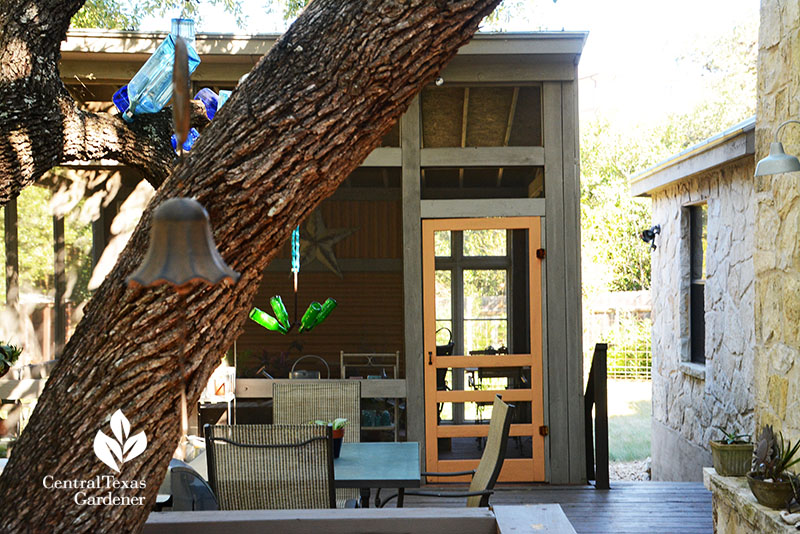
They even salvaged an old military aircraft seat with room for a parachute—just in case Shirley wants to dive into the garden.
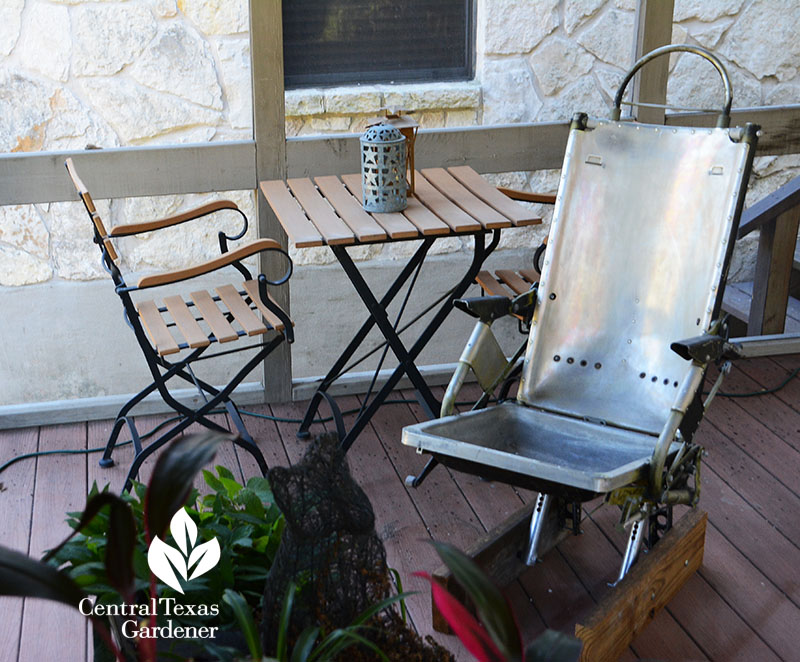
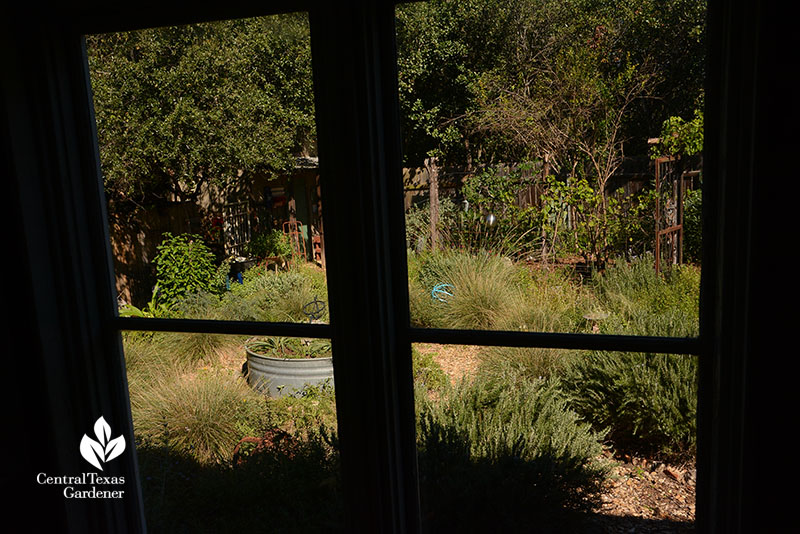
Their cute shed actually looks like they plucked it off a dusty Texas roadside, but they just plucked it from their clever imagination.
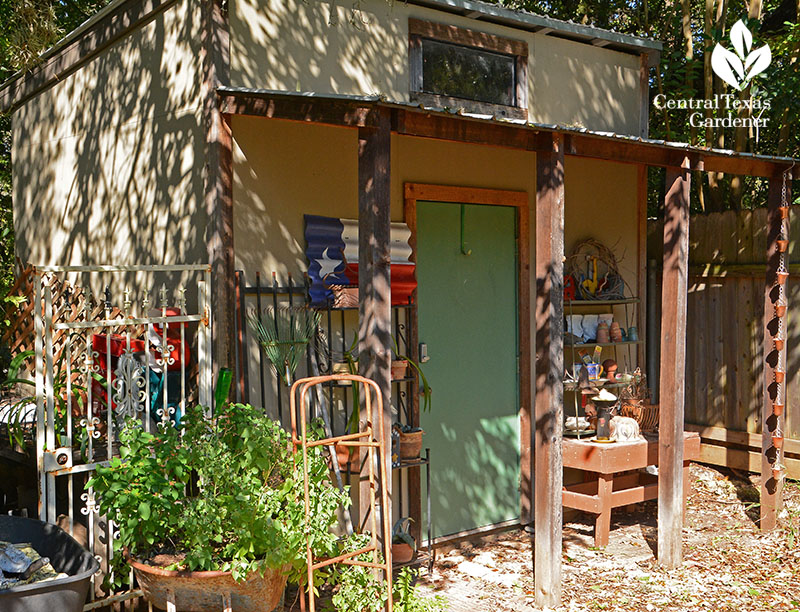
The sun-drenched backyard pretty much died in 2011. Shirley replanted with Texas tough grasses, including various Muhly grasses and flowering perennials and annuals for bees and butterflies.
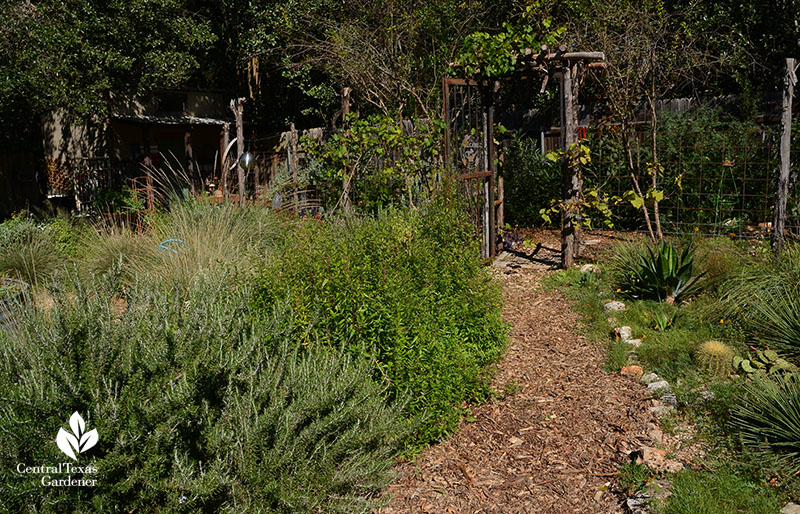
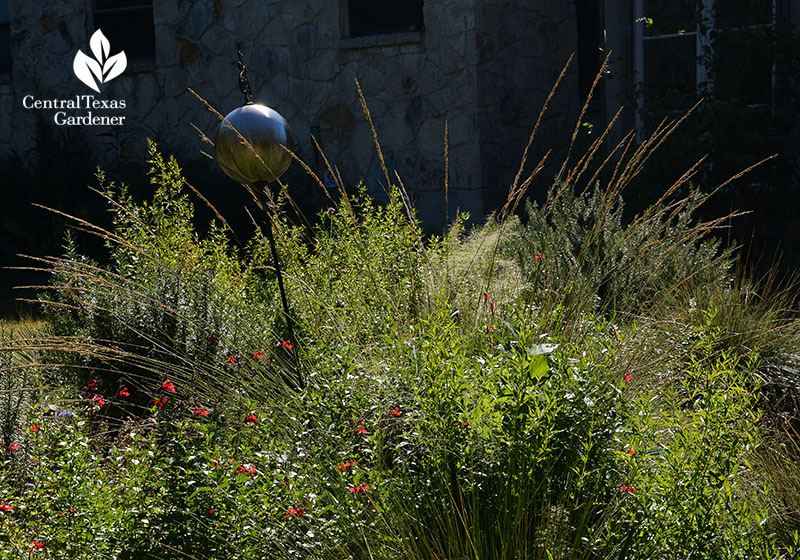
She devised pathways through the sunlight garden around a centerpiece stock tank.
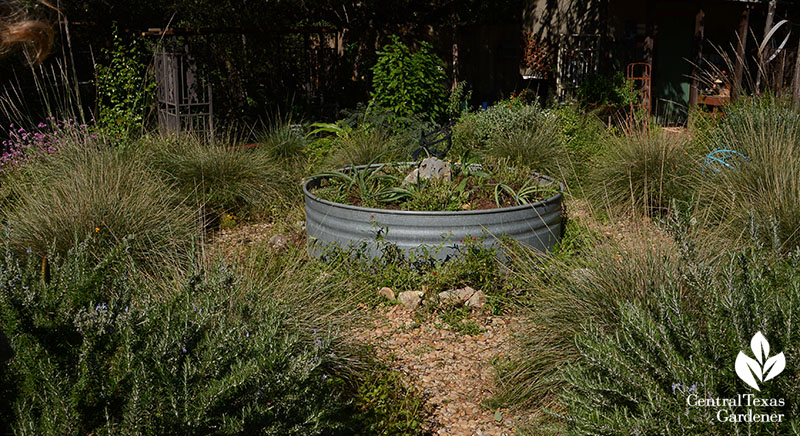
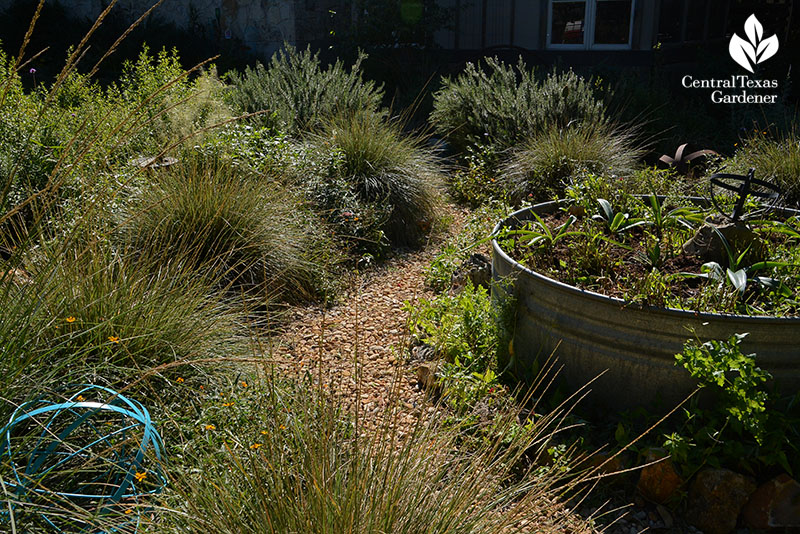
Buffalo grass marks the dividing line between sun and part shade.
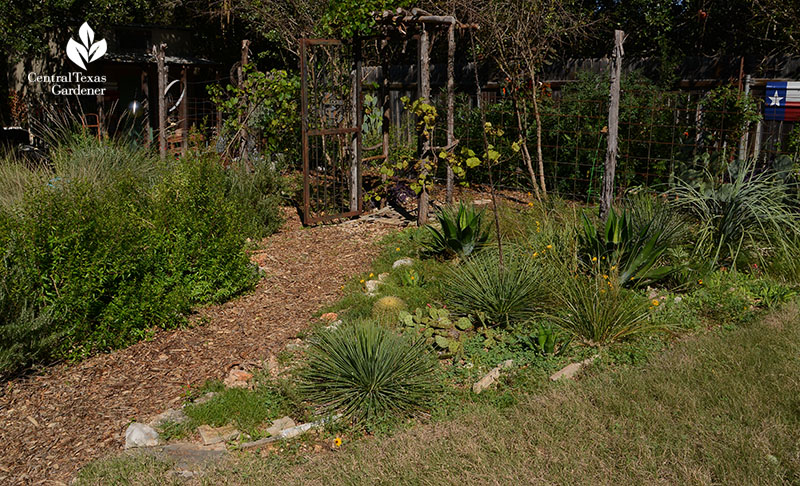
Shirley colors up the shady side of things with ‘Orange Peel’ cestrum and native poinsettia (Euphorbia cyathophora).
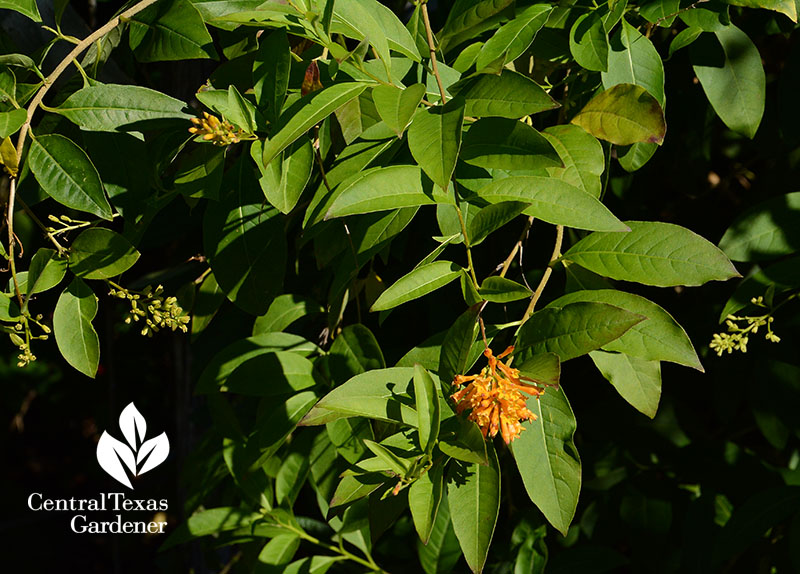
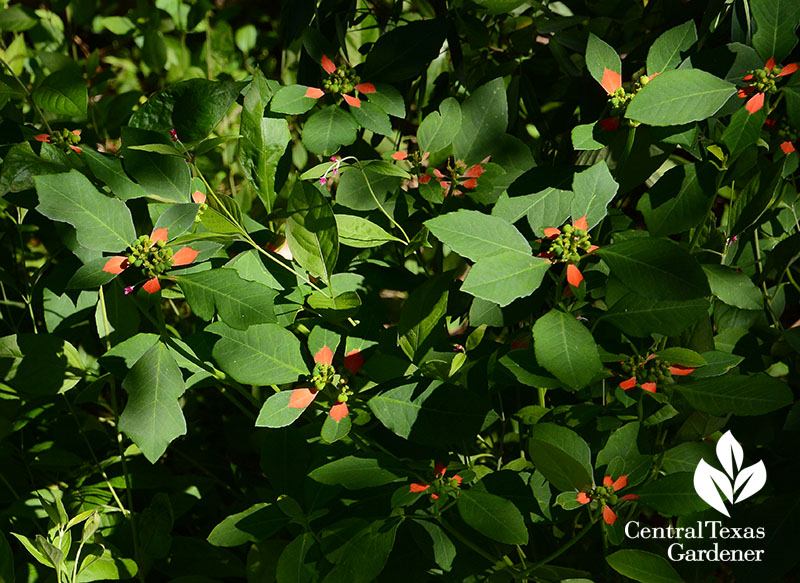
Follow Shirley’s beautiful blog Rock-Oak-Deer for her own insights at home and on the road.
Watch their story now!
And thanks for stopping by! See you next week, Linda

